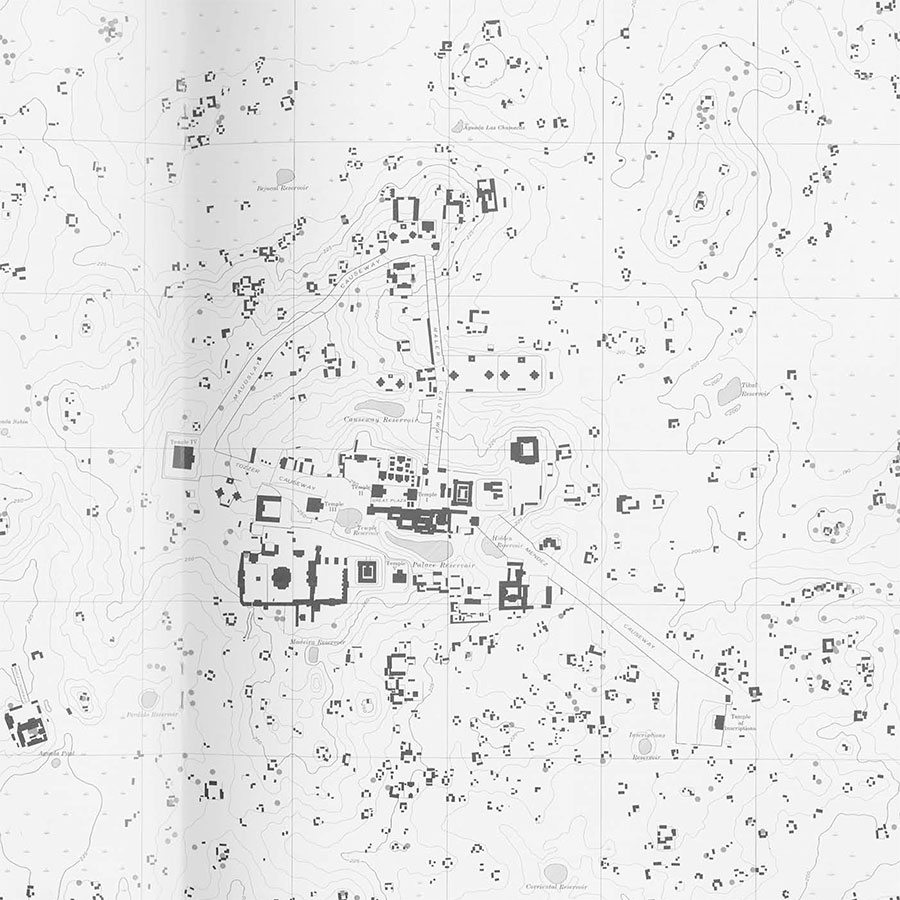
The small entrances to the underground chambers of chultons are hidden by the dense undergrowth of the Lowland forrest, as may be seen in the picture on page 2.
Modern archaeology in all parts of the world abounds with unsolved mysteries and riddles. The Classic Maya area of Central America is no exception. One of the less well known, though no less provoking, mysteries being explored at the Guatemalan site of Tikal centers around the function of strange subterranean chambers called chultuns.
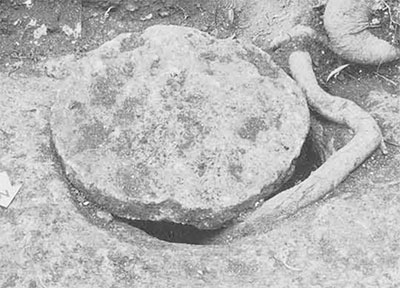
From the surface a chultun appears to be little more than a manhole-like orifice in the bedrock and even this is often partially covered by leaves and a round limestone lid. The hole usually opens down into a small bell-shaped antechamber which in turn leads into larger inner chambers. Chultuns generally contain only one or two such inner chambers, but others have been found with as many as nine. All of these were hollowed out of the limestone bedrock by the ancient Maya, probably with stone tools. Of the many chultuns that have been excavated at Tikal only two were found to be lined with any form of plaster and in both cases they had fairly obviously been altered to serve some new function. The chambers are usually small and cramped with a tendency to get stuffy when one is working in them but otherwise they are cool and dry even when it rains heavily.
The problem is, what were these underground chambers used for? Suggestions which have been proposed include their use as water cisterns, burial chambers, sweat baths, food cellars, underground religious shrines, and even some form of outdoor plumbing. This by no means exhausts a list of all the imaginative solutions which have appeared but it does include what are probably the most likely ones. There is very little evidence to go on, since nothing like the chultuns found at Tikal and Uaxactun is used by any modern Maya group. Nor has any series of artifacts been found in chultuns which might provide clear-cut evidence for a simple answer.
In spite of this overtly discouraging state of affairs there are a number of clues which, when brought together, suggest that food storage is their most likely function. For the first clue we have only to look at the site map of Tikal which locates all the chultuns discovered in the original plane-table survey. If we look specifically at chultuns we soon realize they are no rarity and herein lies a great deal of their significance. Within the 16-square-kilometer mapped area of Tikal alone 280 have been found. New ones are being discovered all the time; in fact 43 have been located incidentally since the completion of the site survey in 1960. In most cases, the chultuns were found only because large roots had pushed away or broken the stone lids that covered the round entrance holes. These would otherwise have remained hidden beneath the layers of fallen leaves that carpet the jungle floor. This suggests that many chultuns still remain so hidden; how many it is impossible to say but it is probably quite a few. On the basis of the indicated prevalence of chultuns we are probably safe in assuming that their use involved some basic and widespread function rather than the needs of some minority of the population.
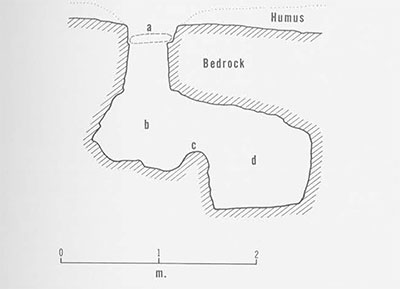
A second clue may be gleaned from the map by looking at chultun distribution. Upon inspection it soon becomes evident that they are common in all portions of the site with the exception of the ceremonial nucleus. Six seasons of excavation in the areas peripheral to the ceremonial nucleus have revealed that the structures found there are predominantly domestic. The association of chultuns with these more modest dwellings lends weight to any hypothesis which suggests some domestic function. Where chultuns occur in apparent isolation, test excavations around them have revealed postholes of “invisible” structures in six out of seven cases. The possibility that chultuns were really an essential part of the domestic unit is suggested by the fact that in the few instances where they were purposely buried or filled, new ones appear to have been dug to replace them as long as domestic occupation of the area continued. It is quite possible that there was at least one chultun for every household group at Tikal.
Finally, the third clue revealed by the map is that most chultuns are found on high or well-drained ground where rapid run-off would allow little moisture to soak into the bedrock. It is not unusual to find them on the highest ground in a particular area. Fairly obviously they were not dug for the purpose of intercepting run-off after a rain. On the contrary, it is quite likely that keeping chultuns dry from run-off and ground water was a major determinant of their location.
Turning now to investigation of the chultuns themselves, we find several more clues. First, the presence of the stone covering lids points to the probability that whatever went on inside them required that they be kept closed. The fact that these lids are often carefully fitted would seem to indicate that their purpose was more than merely the prevention of accidents. If indeed the function of chultuns was the storage of food, a primary use of these lids would have been to keep out rain and possibly vermin. Another clue is the common occurrence of a raised sill between the antechamber and the larger inner chambers which are often at a lower level. In cases where leakage of rain water did occur around the lid this sill would have effectively prevented water from seeping into the main part of the chultun.
The inner chambers are generally small with little more than squatting room. In plan they are round or sometimes squared, giving them the appearance of little rooms. They have flat floors and in a few cases are elaborated with shelves or niches cut in the walls.
The final clues come from the actual excavation of the chultuns, involving some of the most cramped digging imaginable. All the earth has to be removed by buckets which are drawn out by rope, emptied, and then refilled by a man working down inside. As it can be quite dar, artificial lighting is provided with candles or flashlights. To add to the difficulties, chultuns, before excavation, are often already serving as homes for rats, snakes, bats, and even certain species of birds. These creatures can be quite possessive and in a close-quartered chultun the archaeologist is often at a disadvantage. After a day or two of tense skirmishing, however, the animals generally surrender their homes to the cause of science and depart during the night, no doubt somewhat reluctantly.

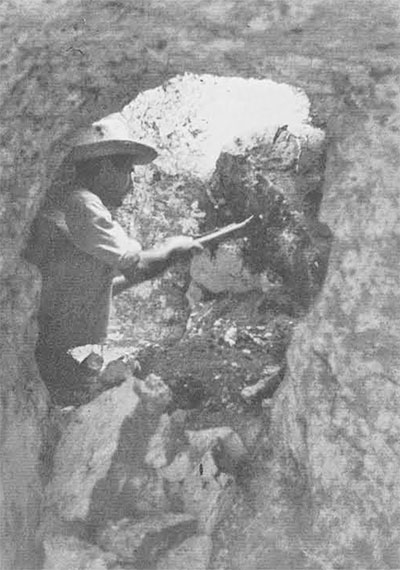
In spite of this combination of difficulties, over fifty chultuns have been excavated at Tikal. What has been found in them? Outside of an occasional burial and a scattering of pottery fragments, very little. One of the exceptions, however, was a rather enigmatic deposit of five large, wide-mouthed pottery vessels discovered in 1961. If indeed chultuns were used for domestic food storage, and these vessels contained some form of food, why have not more of such vessels been found? There are at least two possible explanations: food may have been stored in pots only occasionally; or, when the city was abandoned in the ninth century the Maya may have removed or used up their food supplies before leaving.
The suggestion that chultuns were dug to serve as burial chambers has to be rejected on the evidence that burials are only occasionally found in them and that many more were left empty or covered up by construction without putting anything or anybody in them. On this basis the use of chultuns for burials seems to be entirely secondary and probably merely a matter of convenience.
The suggestion that they served as water cisterns is clearly eliminated by the fact that the un-plastered and extremely porous limestone is wholly incapable of holding water. The structural inconsistencies of chultuns for use as wells might also be considered. It should be mentioned that the chultuns of northern Yucatan apparently were used as water cisterns but they are quite different in many respects, and it is rather unfortunate that two such different features were given the same name when their only similarity is that from the surface both are dark holes in the ground.
Sweat baths are an unlikely possibility since chultuns are very different from the structures which were clearly sweat baths which have been found at Tikal as well as other Classic Maya sites such as Piedras Negras.
Insofar as the religious function explanation goes, there is simply no evidence for it outside of two or three chultuns which were filled and abandoned after ceremonial caches had been left in them. Here, as in the case of burials, we appear to have no more than examples of secondary usage. Viewed from another angle, the large and apparently individual responsibility for the making of chultuns, as well as their association with the domestic area, would seem to favor some more utilitarian explanation anyway.
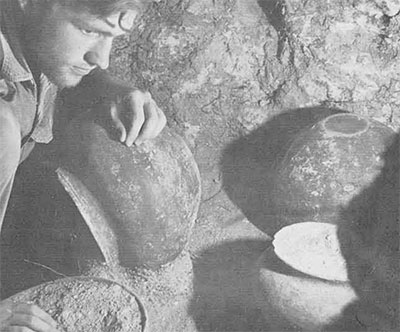
Summarizing the clues that have been presented we find the following. Chultuns were in wide use in the residential area. They were protected from moisture by at least three factors: their construction on high or well-drained ground, the use of a protective lid, the construction of raised sills between chambers. They were meant to be entered, as indicated by the presence of a step-down antechamber, and the fact that the main chambers are inaccessible without so entering. The only artifacts ever found in a chultun at Tikal, left abandoned without being filled, were a series of large, wide-mouthed jars.
No single one of these factors in itself is a very convincing argument for the use of chultuns for food storage. Nevertheless, taken together they certainly make that explanation the most likely of all those that have been suggested. This being the case there is one further step beyond direct study and excavation which can help clarify the situation. This final step involves the actual testing of the proposed solution.
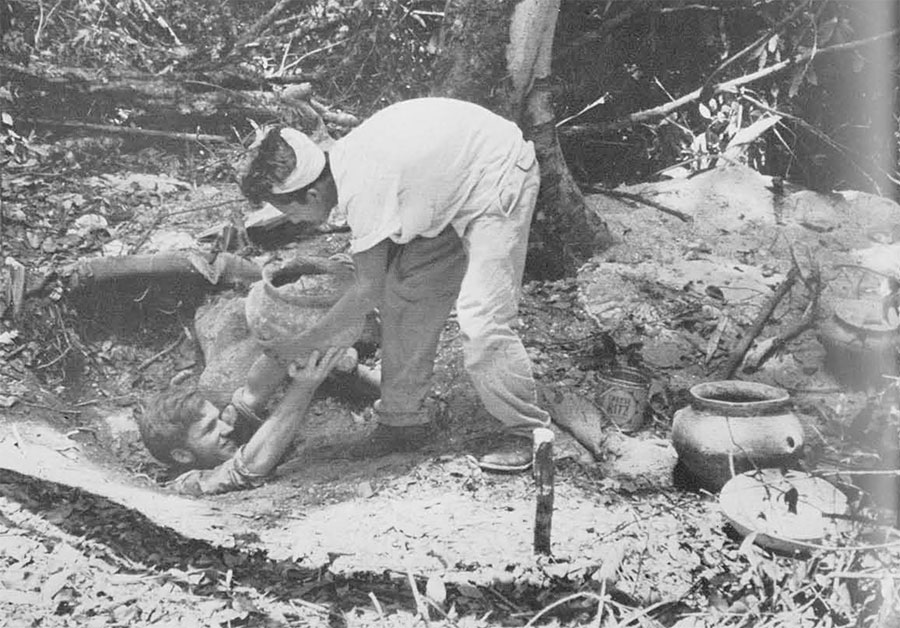
If such an experiment is to be carried out we may begin by asking: What sort of foods might have been stored in chultuns by the Maya? First to come to mind are things like corn, beans, and squash, but could these foods, which today are stored above ground, survive a rainy season in a chultun without mildewing? Perhaps they could not, but what about root crops such as those which grow wild in the Lowland Maya area even today? If it could be shown that the use of chultuns as root cellars is more likely than their use as corn cribs, the suggestion that the Maya might have depended much more heavily on root crops than is generally suspected takes on new significance.
To test the pertinence of these ideas we stocked chultuns in Tikal with root crops as well as a variety of better-known Maya foods. The results of this experiment will surely shed new light on the engrossing mystery of chultuns.
